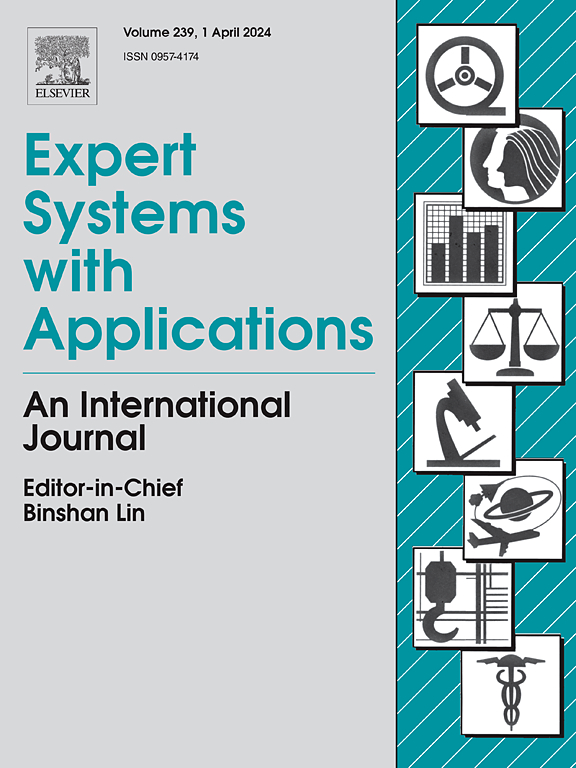基于共形器的时频生成对抗网络的非接触电容耦合ecg呼吸信号
IF 7.5
1区 计算机科学
Q1 COMPUTER SCIENCE, ARTIFICIAL INTELLIGENCE
引用次数: 0
摘要
呼吸监测与分析是检测睡眠相关疾病的重要手段。本文提出了一种利用非接触电容耦合心电图衍生呼吸(cEDR)方法进行呼吸监测的新方法。我们提出了一种生成呼吸信号的时频域生成对抗网络(TF-GAN)方法,并将其成功应用于电容耦合心电图(cECG)。首先,我们分析了呼吸与cECG耦合的机理,并验证了理论的可行性。然后,我们利用所开发的设备采集了16名受试者夜间的脑电图数据,同时采集了呼吸信号作为参考,验证了我们方法的可行性。接下来,我们使用短时傅里叶变换(STFT)将收集到的cECG数据转换为时频域特征,并将这些特征输入到基于卷积增强变压器(Conformer)的生成对抗网络(GAN)中以生成cEDR。该网络架构集成了自关注机制和时频域增强机制,有效提取呼吸能量分量。最后,将生成的呼吸信号与参考信号进行比较。实验结果表明,生成的呼吸信号与参考信号具有较高的相关性。其中86.3%的信号波形相关系数大于0.5,能够很好地再现真实的呼吸波形。我们提出的模型在呼吸信号提取方面表现出优异的性能,在Bland-Altman极限内实现了0.96±0.12 bpm的低均方根误差(RMSE)和94.83%±0.30%的高一致性。此外,即使在较差的cECG信号条件下,该模型仍保持67.56%±8.89%的有效呼吸段比率,显示了其鲁棒性和可靠性。本文章由计算机程序翻译,如有差异,请以英文原文为准。
Noncontact capacitive coupling ECG-Derived respiratory signals using the conformer based time–frequency domain generative adversarial network
Respiratory monitoring and analysis is a key method for detecting sleep-related diseases. This paper presents a novel approach for respiratory monitoring that utilizes noncontact capacitive coupling electrocardiograms-derived respiration (cEDR) method. We propose a Time-Frequency Domain Generative Adversarial Network (TF-GAN) method for generating respiratory signals, and successfully apply it to capacitive coupling electrocardiograms(cECG). First, we analyze the mechanism of respiratory coupling with cECG and verify the feasibility of the theory. Then, using the developed device, we collect cECG data from 16 subjects during the night and simultaneously collect respiratory signals as a reference, to validate the feasibility of our approach. Next, we convert the collected cECG data into time–frequency domain features using Short-Time Fourier Transform (STFT) and input these features into a Convolution-augmented transformer (Conformer) based Generative Adversarial Network(GAN) to generate the cEDR. The network architecture integrates self-attention mechanisms and time–frequency domain enhancement mechanisms to effectively extract the respiratory energy components. Finally, we compare the generated respiratory signals with the reference signals. The experimental results show that the generated respiratory signals exhibit a high correlation with the reference signals. Specifically, 86.3 % of the signals have a absolute waveform correlation coefficient greater than 0.5, indicating good reproduction of real breathing waveforms. Our proposed model demonstrates superior performance in respiratory signal extraction, achieving a low Root Mean Square Error (RMSE) of 0.96 ± 0.12 bpm and a high agreement rate of 94.83 % ± 0.30 % within the Bland–Altman limits. Additionally, the model maintains an effective respiratory segment ratio of 67.56 % ± 8.89 %, even under poor cECG signal conditions, showcasing its robustness and reliability.
求助全文
通过发布文献求助,成功后即可免费获取论文全文。
去求助
来源期刊

Expert Systems with Applications
工程技术-工程:电子与电气
CiteScore
13.80
自引率
10.60%
发文量
2045
审稿时长
8.7 months
期刊介绍:
Expert Systems With Applications is an international journal dedicated to the exchange of information on expert and intelligent systems used globally in industry, government, and universities. The journal emphasizes original papers covering the design, development, testing, implementation, and management of these systems, offering practical guidelines. It spans various sectors such as finance, engineering, marketing, law, project management, information management, medicine, and more. The journal also welcomes papers on multi-agent systems, knowledge management, neural networks, knowledge discovery, data mining, and other related areas, excluding applications to military/defense systems.
 求助内容:
求助内容: 应助结果提醒方式:
应助结果提醒方式:


